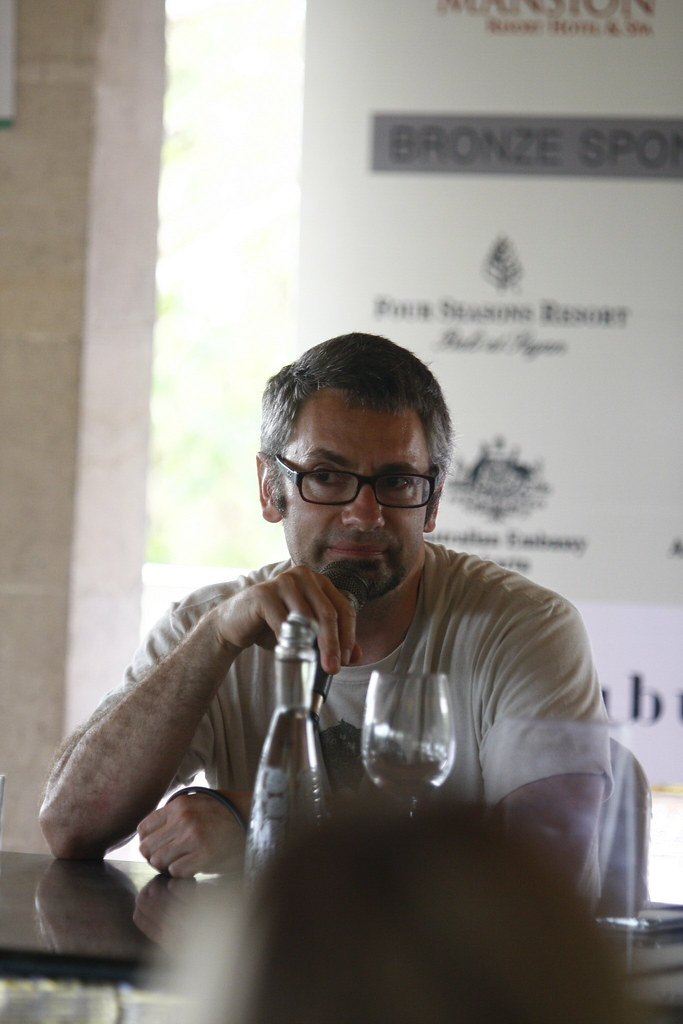Title of the work
Country of the First Edition
Country/countries of popularity
Original Language
First Edition Date
First Edition Details
Dub Leffler, Once There Was a Boy. Broome, Western Australia: Magabala Press, 2011, 40 pp.
ISBN
Awards
2012 - finalist - Deadly Awards (Celebrate Aboriginal and Torres Strait Islander Achievement in Arts, Outstanding Achievement in Literature category
2012 - shortlisted - Speech Pathology Australia Book of the Year Awards, Indigenous Children category
Genre
Alternative histories (Fiction)
Didactic fiction
Mythological fiction
Picture books
Target Audience
Crossover
Cover

We are still trying to obtain permission for posting the original cover.
Author of the Entry:
Elizabeth Hale, University of New England, ehale@une.edu.au
Peer-reviewer of the Entry:
Miriam Riverlea, University of New England, mriverlea@gmail.com
Daniel A. Nkemleke, University of Yaounde 1, nkemlekedan@yahoo.com

Retrieved from flickr.com, licensed under CC BY 2.0 (accessed: December 15, 2021). Image credit Stanny Angga.
Dub Leffler (Author, Illustrator)
Dub Leffler is an Aboriginal author, artist, and illustrator who grew up in the small town of Quirindi, in New South Wales. He is one of thirteen children, and is descended from the Bigambul and Mandandanji people of South Queensland. As well as Once There Was a Boy (Magabala Books, 2011), he has written and illustrated a number of educational picture books for young indigenous and non-indigenous readers, including Claws, Eyes, Flippers (2012) and Animals Move (2012) and The Croyden Park Cooking Club (2014). He has also illustrated picture books written by Australian writers such as Sally Morgan and Ezekial Kwaymullina, Molly and Ayla Ridley-Davison, and collaborated with Australian illustrators Shaun Tan and Colin Thompson. Before resigning to pursue his illustration work full time, he was also a cook at the Tony Mundine Hostel, which provides accommodation for young Aboriginal students pursuing higher education.
Source:
Official website (accessed: March 28, 2018).
Bio prepared by Elizabeth Hale, University of New England, ehale@une.edu.au
Summary
Once There Was a Boy is a picture book focused on the theme of reconciliation. A young black boy lives alone on an island in a sub-tropical or tropical sea. On the island is a boat shaped like a pelican; it is not clear where it has come from, or if it has brought the boy. One day, a young white girl arrives on the island. The boy welcomes her and gives her food and shelter. She eats a great deal of the fruit on the island, which are sapotes, or chocolate-pudding fruit, then asks to sleep in the boy’s hammock. He tells her she can, but forbids her from looking in the box beneath his hammock.
Like a modern-day Pandora, the girl looks in the box. Inside is the boy’s heart. She picks it up, and drops it, shattering it. The boy returns. Devastated, he takes his heart to the sea and throws the pieces in. The girl follows him and offers to give her heart to him. "'This is MY heart,’ she said, ‘and because I broke yours, I’m giving it to you. 'Only if we can share it!' beamed the boy."
Analysis
Once There Was a Boy is told through a sparse text and full-page, often double-spread, illustrations, which are created using acrylics. The colours of the images are clear and bright, evoking the landscape of a tropical island. The story is an allegory of reconciliation, making reference to the destruction of Aboriginal society wreaked by European explorers and colonisers. It alludes to a number of mythological and fairy tale motifs, including the myth of Pandora, in the opening of the box by the girl, which also alludes to the fairytale of Bluebeard. An allusion to Eve, eating the fruit of the tree of knowledge, can be seen in the girl’s eating of the sapotes. The conclusion of the book draws on the idea that Aboriginal and Colonising peoples need to reconcile, to share, to acknowledge the losses caused, and to make a potential reparation.
Despite the obvious allegory, complications can be seen in the work: the boat that dominates the island is shaped like a pelican and has an ambiguous structure that could be native or European. (Has the boy come to the island before now? Is he too an immigrant? There are hints of allusions to Robinson Crusoe as well). The sapote fruit is not native to Australia, coming from Mexico. Perhaps the island symbolises more than one myth of colonisation.
Further Reading
Ambellin Kwaymullina, “Indigenous Picture Books offering windows into worlds”, The Conversation, theconversation.com (accessed: August 3, 2018).


